
The correct use of the subjunctive form is often one of the most difficult hurdles for those who learn Italian…and not only for them! Be aware that using the subjunctive is difficult for many Italians as well!
However, we think that by explaining it clearly and simple, it can be learned and used without too many problems. We hope we can be of help with the following explanation.
What is the subjunctive, and what is it used for?
The subjunctive is a verbal mode used mainly to express some actions or situations that are not necessarily real or certain, and that are on the contrary based on a hope, a desire, an hypothesis, a will…
How is the subjunctive formed?
The subjunctive only has four tenses:
- two simple tenses: the present and the imperfect
- and two compound tenses: the present perfect and the past perfect
The present
In order to form the present of the subjunctive in Italian you have to remember the indicative present: look at the table!
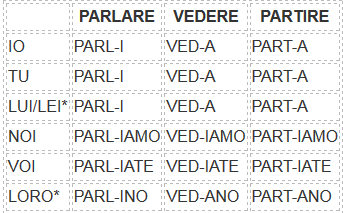
As you can see from the table, in order to form the present of the subjunctive, you have to:
- take the indicative present
- take out the ending of the indicative
- add the ending of the subjunctive
Examples:
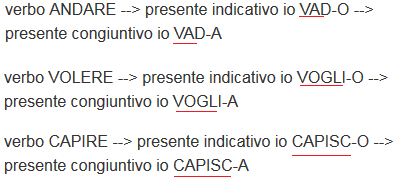
Other verbs have a completely irregular subjunctive form. If you have a good dictionary, you can read the subjunctive form there.
Here is the subjunctive form of the auxiliary verbs avere and essere, necessary to form the present perfect of the subjunctive.
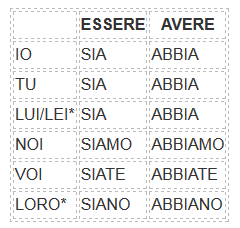
As you may have noticed, a peculiarity of the present subjunctive is the fact that the 1st, 2nd and 3rd persons singular share the same ending.
The imperfect
In order to form the imperfect of the subjunctive, start from the imperfect of the indicative. Have a look at the table:
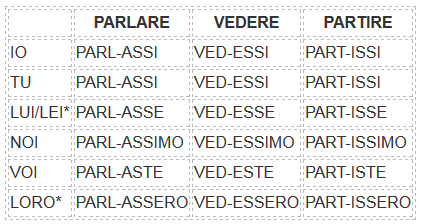
- take the indicative imperfect
- remove the ending
- add the subjunctive imperfect ending
Examples:
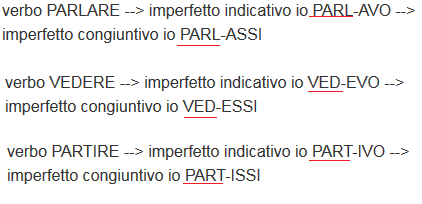
And here is the subjunctive imperfect of the auxiliary verbs avere and essere, used to form the past perfect form of the subjunctive
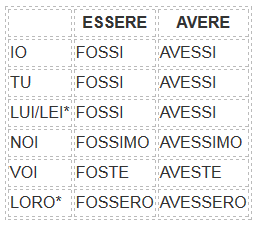
When is the subjunctive used in Italian?
As we were saying, the subjunctive is a verbal mode used mainly to express actions or situations that are not based on reality or certainty, being instead the expression of a hope, a desire, a hypothesis or a will. It is for this reason that the subjunctive is often used in subordinate clauses, that is in clauses that cannot stand on their own, but add information to a main clause.
The subjunctive is therefore used after a main clause in which the verb expresses:
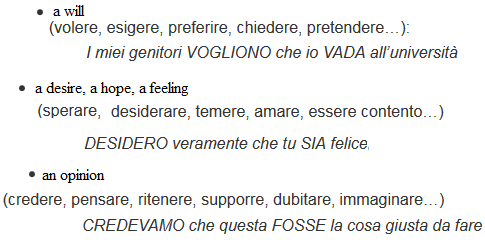
The subjunctive must also be used after a series of expressions. Here are the most important to know:
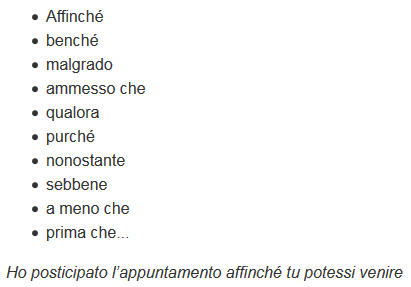
More on the subjunctive
Sometimes the subjunctive can also be used in indepent clauses in a simple sentence:
- when it is used to express a doubt, an uncertainty, in the form of a question:
- when it is used to express a desire
- when we exclaim something
- when we want to command or order someone to do something
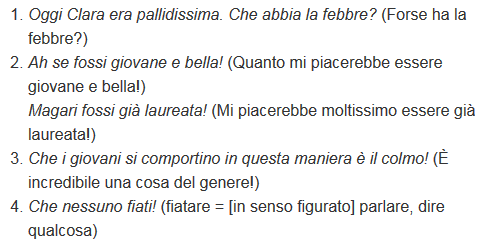
We hope that the subjunctive is now a clear topic for you. If you have any questions do not hesitate to write in the comments form below.
Exercises on the use of the subjunctive
A song by 883